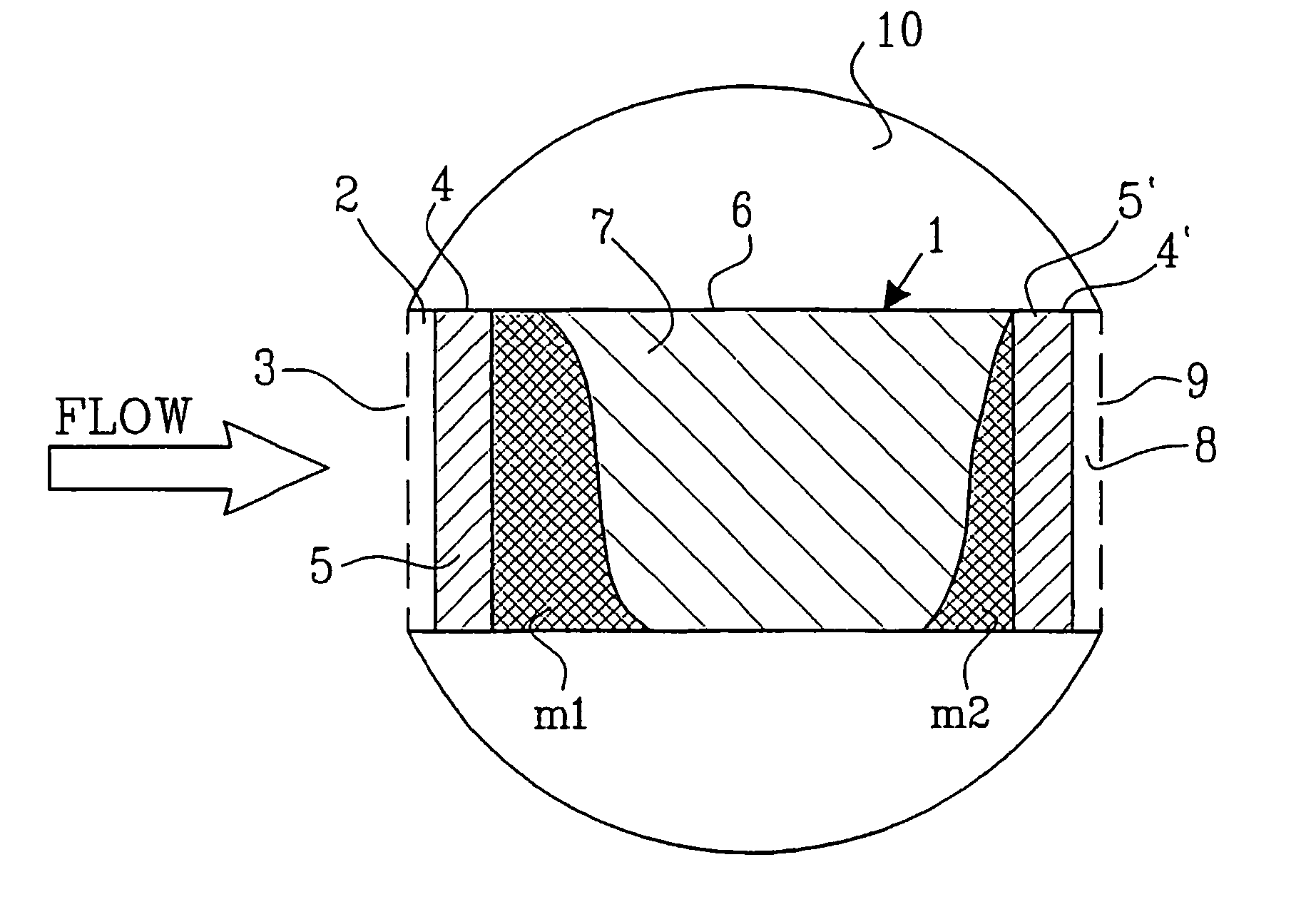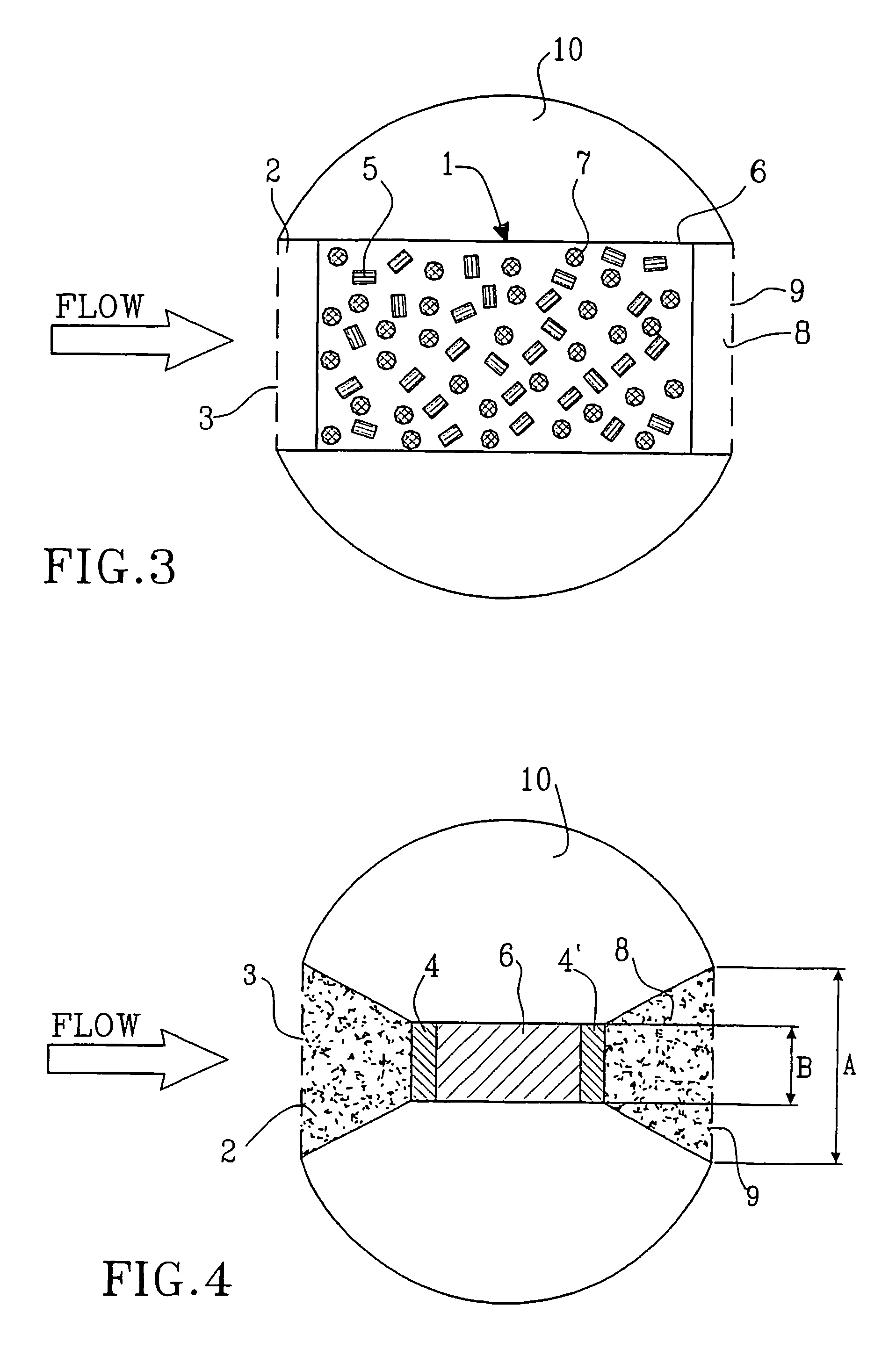Sampling device and method for measuring fluid flow and solute mass transport
a sampling device and fluid flow technology, applied in the direction of component separation, indication/recording movement, underground water prospecting/detection, etc., can solve the problems of inconvenient sampling of organic and/or inorganic solutes, inability to have an adsorbent material, and high cost of repeated sampling. , to achieve the effect of accurate measuremen
- Summary
- Abstract
- Description
- Claims
- Application Information
AI Technical Summary
Benefits of technology
Problems solved by technology
Method used
Image
Examples
Embodiment Construction
[0081]The device shown in FIG. 1 represents a simple technical configuration of the sampling device according to the invention. The device contains a casing 1 comprising an inlet section 2 having an inlet opening 3, which preferably is covered with a mesh, a perforated screen or the like, a first permeable tracer section 4 containing at least one partly soluble internal tracer 5 in a known amount and with known diffusion properties, an adsorbent matrix section 6 in the form of a permeable volume filled with an insoluble solid porous matrix 7, comprising of at least one adsorbent material that is particularly suited for the solutes of interest and the used tracers, a second permeable tracer section 4′ containing at least one partly soluble internal tracer 5′ in a known amount and with known diffusion properties, an outlet section 8 having an outlet opening 9 preferably covered with a mesh, a perforated plate or the like, and a solid housing 10 for the casing 1. The housing 10 may eit...
PUM
| Property | Measurement | Unit |
|---|---|---|
| molecular diffusion coefficients | aaaaa | aaaaa |
| velocity | aaaaa | aaaaa |
| pore water velocities | aaaaa | aaaaa |
Abstract
Description
Claims
Application Information
 Login to View More
Login to View More - R&D
- Intellectual Property
- Life Sciences
- Materials
- Tech Scout
- Unparalleled Data Quality
- Higher Quality Content
- 60% Fewer Hallucinations
Browse by: Latest US Patents, China's latest patents, Technical Efficacy Thesaurus, Application Domain, Technology Topic, Popular Technical Reports.
© 2025 PatSnap. All rights reserved.Legal|Privacy policy|Modern Slavery Act Transparency Statement|Sitemap|About US| Contact US: help@patsnap.com



